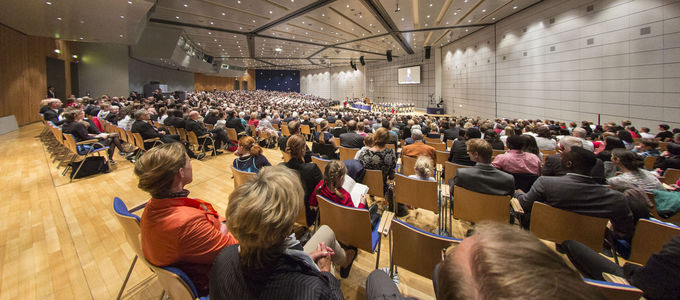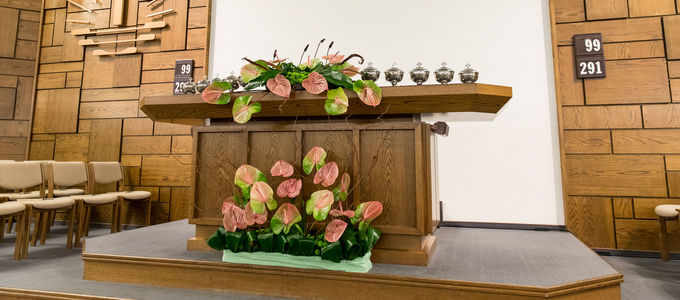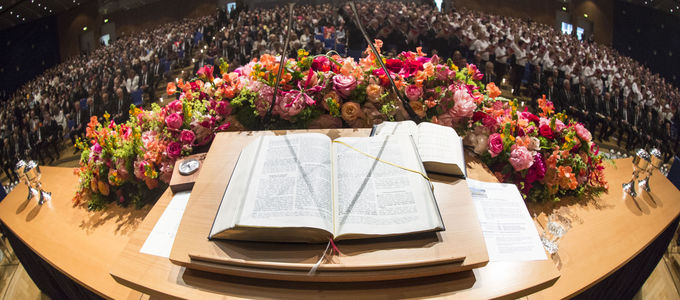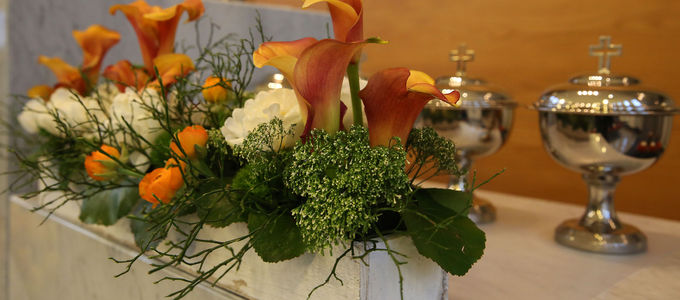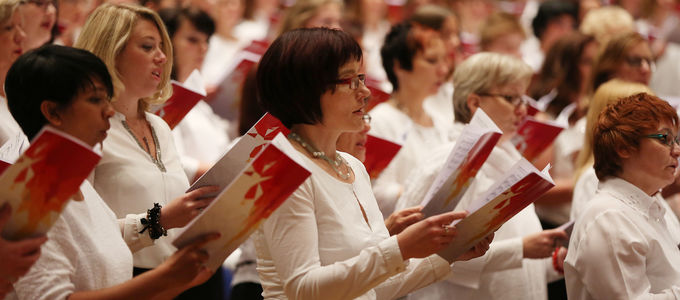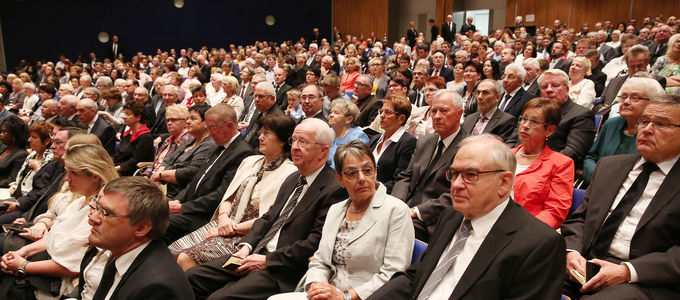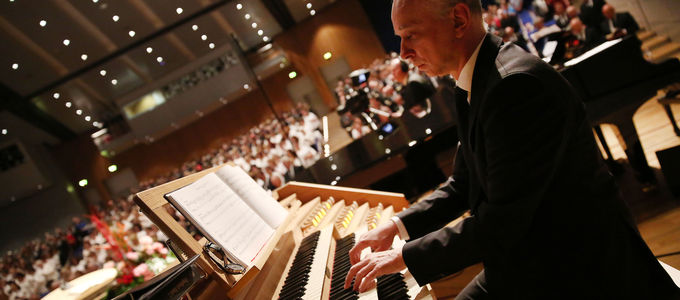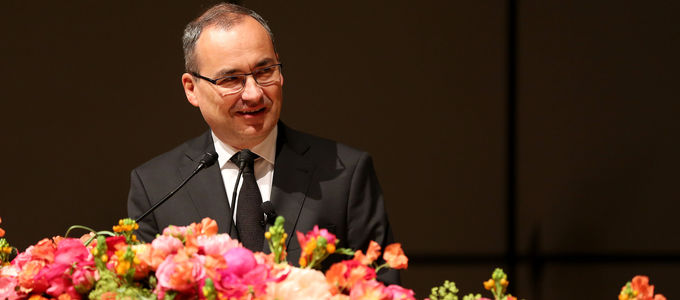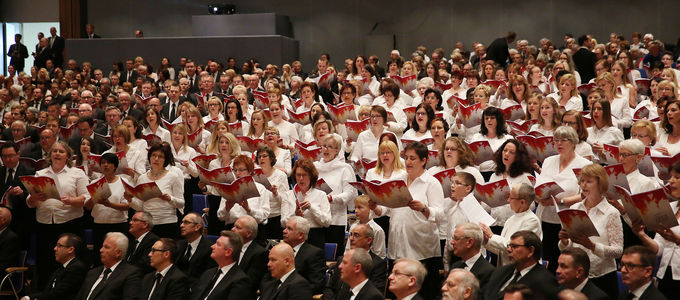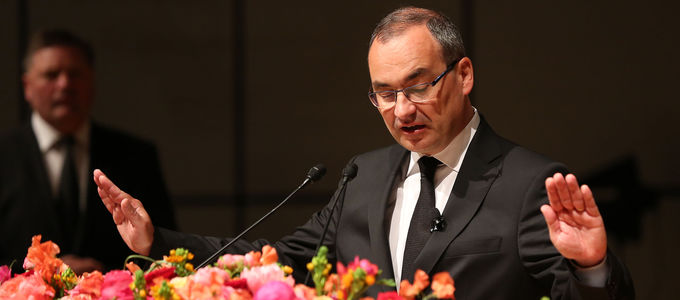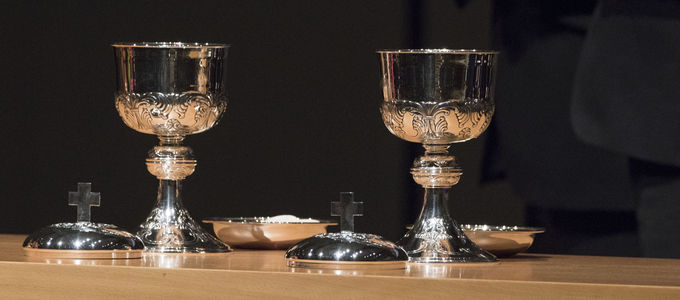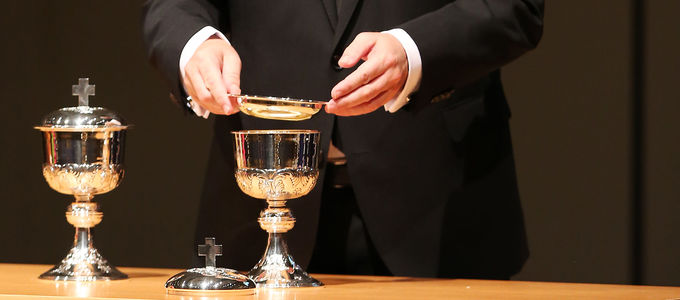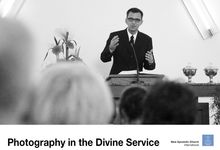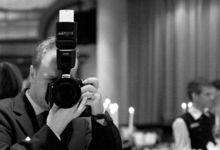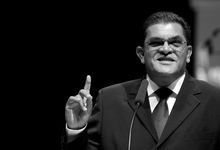Getting the picture (2) – It’s more than just snapping pictures
Pictures tell stories and photos answer questions: crucial is that you press the shutter button at the right moment. And what should the focus in a divine service be? A summary of subjects and options.
“If you want to cook well, all you need are a couple of good pots and pans.” This is how Oliver Rütten likes to start his workshops. No, he is not a cook, but a photographer and an editor at nac.today. He uses this one-liner as an attention grabber.
Just like a good cook, a good photographer also needs more than his equipment. Both must be in full possession of their senses. The one has to have a good sense of taste and smell, the other one has to have a good photographic eye. Both in cooking as well as in photography you get those who seem to have a natural talent. But anyone can learn the tricks of the trade. Important is that you occupy yourself with it.
Peace of mind before and after
A divine service setting offers plenty of subjects. The question is, what has to be in the focus? And what better not? A first answer leads to additional questions, which all need to ask themselves who want to report about an event. Who are the main subjects? What is the occasion? Where and when? How and why?
Photographers do not begin to hunt for their answers in the course of a divine service, but already well before and even after. This will not only give them peace of mind, but there is far less risk of them becoming a disturbing factor in the quiet and devout atmosphere of a church.
A few possibilities:
- Before a divine service: exterior shots, interior shots of the church, altar and flower decorations and communion cups, arrival of officiant and official greeting, glance into the congregation, guests of honour, choirs and instrumental ensembles, organ, hymn numbers, broadcasting equipment.
- After a divine service: congratulations; taking leave; conversations; Bible, Bible passage; hymnal, open or closed; programme.
A collection that will always work
A collection of generally accepted standard subjects has developed over time, which will serve all purposes: personal recollection, congregational newsletters, newspapers, magazines, or publication on the Internet.
- Location: exterior shots of the building, interior of church, altar, communion cups, flower decoration, Bible. Important: the altar area is holy and out of bounds. It may only be entered in exceptional cases and then with express permission.
- Congregation: members greeting each other, singing, members seated during service, glance into the congregation, sheet music/hymnal, saying goodbye.
- Divine service: officiant, assisting ministers, consecration, holy acts, covering of the communion cups. Important: holy acts, sacraments, and ordinations/appointments/assignments must be discussed with the officiant beforehand, unless this has always been done and has never posed any issues.
- Music: choir as a whole and smaller sections of it, organ and organ player, entire orchestra/ensemble and smaller sections, soloists also separately.
This subject list is neither a specification sheet that has to be followed to the letter nor is it a carte blanche. The list is to serve photographers merely as a guide.
Practical tip from Oliver Rütten: Anyone who is frequently asked to take pictures in church can every now and then focus on a different subject and implement it effectively. This way, the photographer can develop his photographic eye.
Article info
Author:
Date:
Keywords:
Andreas Rother
04.02.2019
divine services for ministers,
Media,
Congregational life


